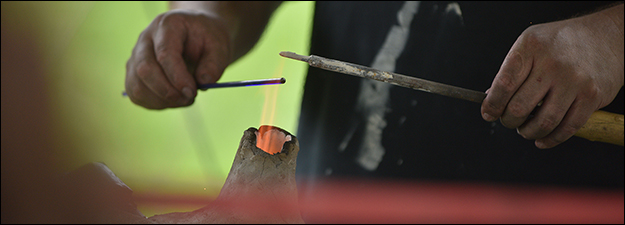The Cultures of Armenia and Georgia
Sponsoring Organization(s)
Rare Book Dept., The Free Library of Philadelphia
Organizer Name
Bert Beynen
Organizer Affiliation
Osher Lifelong Learning Institute, Temple Univ.
Presider Name
Bert Beynen
Paper Title 1
Religions in Competition: Christianity and Islam in Twelfth-Century Armenian Neomartyrologies
Presenter 1 Name
Sergio La Porta
Presenter 1 Affiliation
California State Univ.-Fresno
Paper Title 2
The Translation Corpus of the Pre-Athonite Period
Presenter 2 Name
Nino Doborjginidze, Irina Lobzhanidze
Presenter 2 Affiliation
Ilia State Univ., Ilia State Univ.
Start Date
13-5-2016 10:00 AM
Session Location
Fetzer 2030
Description
Professor La Porta discusses a group of Armenian neomartyrologies and argues that these texts do not provide evidence for a policy of religious persecution, but indicate a climate of religious competition. Professor Asatiani traces how Medieval Georgian changed from 13 to 11 screeves and offers some cognitive interpretation based on the changes in linguistic ‘world view.’ Professors Doborjginidze and Lobzhanidze give an overview of Georgian manuscripts from before the so-called Athonite period, when a number of manuscripts were written, translated and actively edited from the 5th century onward in Georgian cultural centers, e.g. on Mount Sinai. Ms. Petrosyan reconstructs the Armenian lexicon of the Kitāb al-turjumān [Book of the Translator], a topically classified (i.e. non-alphabetic) Syriac-Arabic glossary written in garshuni, Arabic-language writings using the Syriac alphabet, and an important Christian and philosophical work in both Syriac and Arabic cultural history .
Bert Beynen
The Cultures of Armenia and Georgia
Fetzer 2030
Professor La Porta discusses a group of Armenian neomartyrologies and argues that these texts do not provide evidence for a policy of religious persecution, but indicate a climate of religious competition. Professor Asatiani traces how Medieval Georgian changed from 13 to 11 screeves and offers some cognitive interpretation based on the changes in linguistic ‘world view.’ Professors Doborjginidze and Lobzhanidze give an overview of Georgian manuscripts from before the so-called Athonite period, when a number of manuscripts were written, translated and actively edited from the 5th century onward in Georgian cultural centers, e.g. on Mount Sinai. Ms. Petrosyan reconstructs the Armenian lexicon of the Kitāb al-turjumān [Book of the Translator], a topically classified (i.e. non-alphabetic) Syriac-Arabic glossary written in garshuni, Arabic-language writings using the Syriac alphabet, and an important Christian and philosophical work in both Syriac and Arabic cultural history .
Bert Beynen


